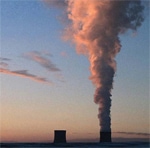 |
|
Stark differences: Europe and the US have taken very different approaches to tackling global warming. |
More than 30 years ago, engineers in the Mohave Desert in California pioneered the earliest and largest photovoltaic panels on earth. Since that time Europe has sprinted ahead of the United States in terms of research, development and implementation in many areas of sustainable energy. As renewable industries gain momentum, both continents are now sharing and learning from each other’s experiences.
One salient difference is the source of funding. In Europe governments have been more proactive; in the US a more sophisticated platform exists for venture capital financing. In both cases R&D; remains paramount. “If we can’t reduce the cost per kilowatt, solar alternatives will never be cheaper than fossil fuels,” points out René Gurka, managing director at Berlin Partner, a firm that helps US and German companies establish joint ventures. While technology is imperative, other factors also distinguish Old and New World approaches, such as social adaptation, marketing, stewardship and even accounting practices.
Financial Incentives
European investment policies with long horizons have spurred growth in renewables, especially solar. Thanks largely to its feed-in program, Germany has become the biggest solar market in the world. German government statistics report that in 2007 more than 14% of the country’s energy came from renewables, with 140,000 people employed in the overall sector and 40,000 in the solar field alone. German legislation has evolved from the Electricity Feed Act in 1991, expanding in 2004 with the Renewable Energy Law (EEG).
Feed-in regulations require that electric utilities purchase excess electricity generated from renewables, such as sun or wind, from commercial and private owners. German utilities pay about four times the market rate to participants, enabling some enterprising souls to generate an entire income from rooftop installations. Bavarian farmers, with their broad barn roofs, have responded most eagerly. The program is guaranteed for 20 years, providing for full payback on the equipment in less than a decade. Who foots the bill? The cost is currently spread across all end users, totaling about €2 a month for an average family.
More than 45 other countries have introduced similar systems. In the US the $3.3 billion California Solar Initiative, nicknamed the Million Solar Roofs Program, was enacted on January 1, 2007, with a goal to create 3,000 megawatts of new solar electricity by 2017. Unlike the German model, however, it extends only 10 years.
Some argue that the shorter duration in California creates less payback time and revenue certainty for project owners. On the other hand, “California has set up a trigger mechanism whereby tariffs automatically decrease as more applications are received,” says Chris O’Brien, head of market development and government relations for North America at Swiss solar panel maker Oerlikon. “So adjustments can mirror what is needed as we glide past grid parity.”
Besides feed-in programs, Germany provides generous subsidies for solar cell fabricators. Large-scale start-up ventures that produce, say, 30 megawatts of energy receive 50% back in cash. “Their capital expenses are expensive tools and machinery—not just software,” Gurka explains.
Technology: Wind and Waves
Scotland’s geographic location offers a special benefit. As the waves roll across the Atlantic, nothing stands between its western coastline and the US (England, of course, is blocked by Ireland). With that advantage, its European Marine Energy Center in Stromness, Orkney, has become the only site in the world to date for testing sub-sea wave and tidal machines connected to the grid. Pelamis, its first deep-water 750-kilowatt machine, looks like a huge, long, red snake. Three such machines have recently been sold to Enersis and make their commercial debut in Portugal this summer.
Meanwhile, Scottish engineers have turned their attention to offshore wind projects, taking them farther out to sea for less visual intrusion. An early demonstration in the Moray Firth indicates that wind turbines can be situated in deep water, 12 miles offshore; most in Europe are only two or three miles from land. That flagship project, next to the Beatrice oilfield, sits 150 feet deep, almost double the depth used elsewhere. In building the structure, the Scots “married two technologies, borrowed from oil and gas,” explains Paul O’Brien, renewable energy manager at Scottish Enterprise in Glasgow. A jacket, or lattice tower, rests on the water with a turbine on top; until now, the large steel sleeves, hammered into the seabed, could reach only 80 feet down.
Deep-water turbines are more expensive than those on land. The open spaces in the US make it more economical to operate onshore, in states like Texas or California or in the Midwest. Yet even in Texas the wind blows mainly at night so it makes sense to use offshore resources during the day. In New England land is scarcer, and demand is high from heavily populated cities. Yet when wind advocates tried to set up turbines near Martha’s Vineyard, they met fierce resistance from well-heeled residents who did not want their seascape views disturbed. (Even those objectors have noted what is happening in Scotland and suggested that Massachusetts might follow suit.) Again, cost counts. “We won’t be able to prove it is economical until we can start mass manufacturing,” says Paul O’Brien.
Raising Social Consciousness
Corporations are also fundamental to raising green consciousness. At Basware, a Finnish supplier of financial processing software, the company constantly reminds staff how to save energy and reduce waste. In each room a waste station contains multiple bins. New employees receive initial coaching from colleagues and supervisors; website reminders and emails follow. Small stickers throughout offices encourage turning off unnecessary lights, office temperatures automatically drop during nights and holiday seasons, and, soon, subcontractors and suppliers will be expected to follow similar procedures.
In Europe recycling gained attention in the early 1980s but took about 10 years to become the norm. What office workers began, later followed them throughout life, becoming internalized. Jari Tavi, chief technology officer at Basware, worked in Silicon Valley in 2000, where he was startled to see how little was actually being recycled, despite the lip service paid to green behavior in the US corporate world. “In countries like Switzerland, citizens are a small police force in themselves,” says Tavi.
In the public sector Europe is taking the lead in efforts to reduce paper waste through electronic communications. A recent European Union initiative, the Pan European Public Procurement Pilot Online, focuses on solutions to remove all government paper transactions by ordering, supplying, buying and invoicing electronically. In the US, by contrast, where the government sector is highly fragmented, initiatives for paper reduction have tended to “fade away,” Tavi notes.
Space Constraints Drive European Innovation
European countries experience tighter physical constraints than those in the US. Neighboring territories have long learned to deal with interdependence and mechanisms for cross-boundary issues. “North America still clings to a notion of a great frontier,” says Bryan Smith, co-author of The Necessary Revolution and faculty member at Sustainable Enterprise Academy at York University in Toronto. “In Europe it is accepted that people cannot continue piling up waste in landfills,” he points out. The EU’s Extended Producer Responsibility (EPR) legislation, implemented in 2006, codified the principle that auto, electronic and electrical producers are responsible for taking back their products after their useful lives.
“BMW viewed the product takeback strategy as an opportunity to drive innovation,” explains Smith. In the 1990s the automaker was planning to build a new centralized recycling facility. When the firm realized it made no sense to transport scrap long distances from all over, it revised its plans in favor of a network of smaller disassembly facilities. Recognizing the high cost involved in using far-flung sites, BMW convinced fellow German auto manufacturers to collaborate. Ultimately, other European automakers and stakeholders joined the effort in working with the EU bureaucrats to shape the EPR directive.
By a similar token, Sony Europe organized a common EPR system for electronic equipment manufacturers. The European Recycling Platform was set up in 2002 by Braun, Electrolux, HP and Sony to let electronics companies manage their takebacks collectively. Many such issues are more efficiently resolved through collaboration between private companies and public and government organizations. But the highly competitive US market ethos discourages such collaboration.
 |
|
Euro-style: At its new Leipzig factory, BMW is exploring eco-friendly car designs. |
Europe Reports Progress
Sustainability reporting can be either offensive or defensive. A purely defensive approach, especially for consumer-oriented companies, fails to recognize potential strategic opportunities. US companies, which have historically regarded green reporting as a defensive mechanism, have only recently begun to realize how it can boost corporate value. “Europeans look more to the perception of benefits of green practices and the positioning of the company rather than just the economic cost savings,” says Christopher Michaelson, director at PricewaterhouseCoopers’ retail and consumer advisory practice. In Europe reputation value is held as an article of faith. “People talk about it in the US, too,” he adds. “There, the financial executive nods and asks, ‘What’s it worth?’”
Cost savings initiatives often go hand in hand with environmental benefits. For example, Costco’s switch to square and stackable milk jugs dramatically decreased refrigeration expenses in trucks, stores and warehouses. It speeded up distribution and reduced energy costs. In Europe some of that low-hanging fruit may not be as plentiful. But that continent remains ahead in sustainability, partly because financial reporting is scored on a longer basis. While the US focuses on quarterly results, most green topics have impact well beyond a season, or even the average five- or 10-year tenure of a CEO.
The US is more advanced, though, in quantifying and reporting the value of green practices, although the senior leadership team—typically focused on market returns and finance—often still does not fully comprehend the benefits of sustainable business. Faced with dozens of alternative green practices, the key, says Michaelson, may be to step back and evaluate the choices in a structured process: “That leads to a more disciplined financial analysis and prioritization on what you can do, based on measurable business financial benefits.”
Vanessa Drucker



